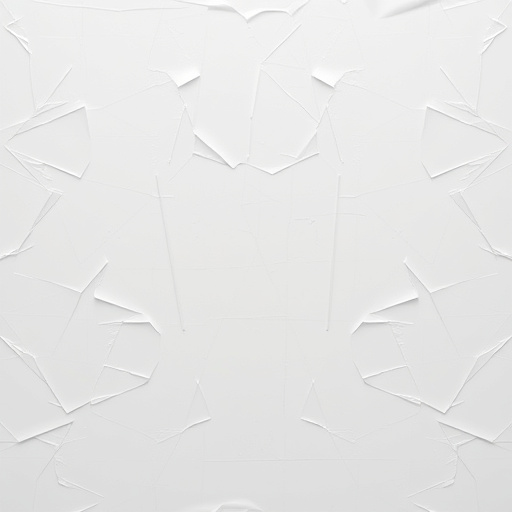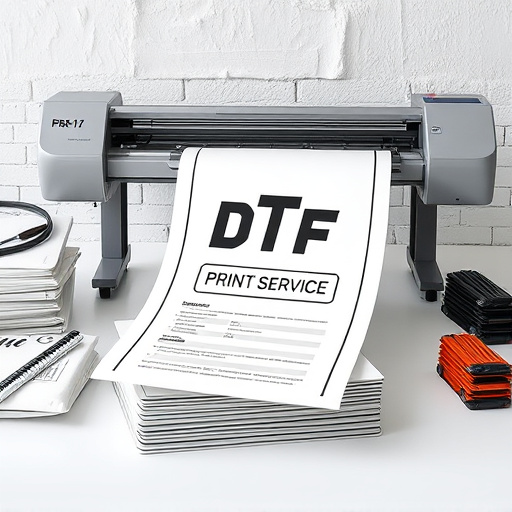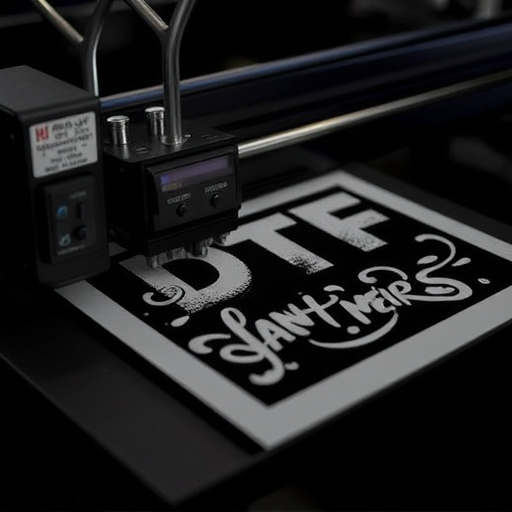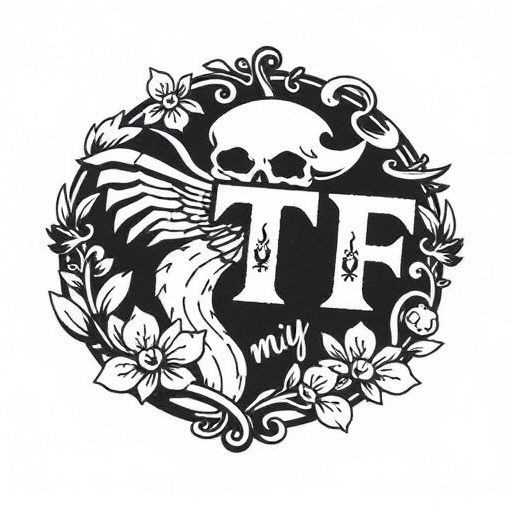DTF Powder Adhesive: Revolutionize Fabric Bonding Today

DTF Powder Adhesive is a cutting-edge fabric bonding solution with unmatched strength and versatilit…….
In the realm of industrial adhesion, few substances have garnered as much attention as DTF Powder Adhesive. This innovative compound has revolutionized bonding processes across diverse sectors, offering unparalleled strength and versatility. This article aims to delve into the world of DTF Powder Adhesive, exploring its definition, global reach, economic implications, technological developments, regulatory landscape, challenges, real-world applications, and future potential. By the end, readers will gain a comprehensive understanding of this remarkable adhesive’s significance and its role in shaping industries worldwide.
Definition: DTF (Dicyandiamide) Powder Adhesive is a highly effective bonding agent derived from dicyandiamide, a key component known for its exceptional adhesive properties. This powder-like substance forms a strong, durable bond when mixed with water, creating a viscous paste that binds materials tightly.
Core Components: The primary ingredient, Dicyandiamide (DIA), is an organic compound with unique molecular structures that facilitate cross-linking and enhance adhesion. When combined with water, DTF powder forms a reactive mixture, ensuring robust bonding across various substrates.
Historical Context: The development of DTF Powder Adhesive traces back to the early 20th century when researchers sought more potent alternatives to traditional adhesives. Over time, dicyandiamide emerged as a game-changer, with its ability to form strong bonds under mild conditions attracting significant interest from industries worldwide.
Significance: DTF Powder Adhesive’s importance lies in its versatility and strength. It excels in bonding materials like metal, wood, plastic, and composite structures, making it invaluable in construction, automotive, manufacturing, and even aerospace sectors. Its ability to create long-lasting bonds under diverse conditions sets it apart from conventional adhesives.
The influence of DTF Powder Adhesive extends far beyond borders, with its adoption driving significant trends in various regions:
Asia Pacific Dominance: This region, particularly China and Japan, leads in DTF adhesive production and consumption. The robust manufacturing sector and increasing demand for high-performance adhesives drive this dominance. Countries here invest heavily in research to enhance the capabilities of DTF-based bonding solutions.
European Innovation: Europe contributes significantly to technological advancements in DTF adhesives. Germany, France, and Italy are at the forefront of developing specialized formulations tailored to specific industrial needs. These innovations cater to the region’s diverse manufacturing sectors, from automotive to electronics.
North American Growth: The United States and Canada witness steady growth in DTF adhesive usage, driven by the construction and automotive industries’ pursuit of stronger, more efficient bonding methods. North American manufacturers are exploring DTF for its potential to reduce production time and costs while improving product durability.
Emerging Markets Rise: India, Brazil, and South Africa are experiencing a surge in demand for DTF Powder Adhesive as their manufacturing sectors expand. These countries’ focus on infrastructure development and automotive growth drives the adoption of advanced adhesives like DTF.
The global DTF Powder Adhesive market, valued at USD 2.5 billion in 2022, is projected to grow at a CAGR of 6.2% from 2023 to 2030 (Grand View Research). This growth is attributed to the rising demand for lightweight, strong materials and the need for efficient bonding solutions.
Key market drivers include the automotive industry’s shift towards electric vehicles, requiring advanced adhesives for battery packs and structural components, and the construction sector’s emphasis on durable, long-lasting bonds.
Major manufacturers are investing heavily in R&D to develop high-performance DTF adhesives tailored to specific applications. These investments aim to enhance product durability, reduce curing times, and expand bonding capabilities.
Private equity firms and venture capitalists are showing interest in startups specializing in DTF technology, backing innovations that can disrupt traditional adhesive markets and offer cost-effective solutions.
The widespread adoption of DTF Powder Adhesive contributes to economic growth by optimizing production processes, reducing waste, and enhancing product quality. This results in cost savings for manufacturers and improved competitiveness globally.
It also drives job creation, especially in R&D, manufacturing, and distribution sectors, contributing to local economies.
DTF Powder Adhesive’s evolution has been marked by significant technological breakthroughs:
Nanocomposite Formulations: Researchers have incorporated nanoparticles into DTF adhesives, enhancing their mechanical properties and thermal stability. These nanocomposites offer improved bond strength, especially in extreme conditions, making them suitable for aerospace and high-performance automotive applications.
Water-Based Systems: Developing water-based DTF adhesives has been a game-changer, offering environmental benefits with reduced volatile organic compound (VOC) emissions. This shift aligns with the global push for sustainable manufacturing practices. Water-based systems also provide faster curing times and improved handling characteristics.
Smart Adhesives: The integration of smart materials into DTF adhesives enables self-healing capabilities and dynamic response to environmental changes. These advanced adhesives can repair themselves over time, extending their useful life and ensuring consistent performance.
3D Printing Applications: DTF Powder Adhesive has found a niche in 3D printing, where it is used as a support material for complex geometries during the printing process. Its ability to create strong bonds between layers enhances print quality and structural integrity.
The development and use of DTF Powder Adhesive are governed by various policies and regulations worldwide, ensuring safety, environmental protection, and consumer rights:
Chemical Registration and Assessment: Many countries have chemical registration databases, such as REACH (Registration, Evaluation, Authorization, and Restriction of Chemicals) in Europe, where manufacturers must register and evaluate DTF adhesives to ensure their safe use.
VOC Emissions Controls: Strict regulations limit the release of VOCs from adhesive products, encouraging the adoption of water-based DTF systems that significantly reduce emissions.
Product Safety Standards: Organizations like UL (Underwriters Laboratories) and TÜV certify DTF adhesives for safety, ensuring they meet performance and toxicity standards, particularly important in industries with high human exposure risks.
Environmental Compliance: Manufacturers must adhere to guidelines for waste disposal and recycling, especially regarding the proper handling of spent DTF powder and byproducts.
Despite its numerous advantages, DTF Powder Adhesive faces challenges and criticisms that require thoughtful solutions:
Cost Concerns: One of the primary drawbacks is the higher cost compared to traditional adhesives, which can be a barrier for smaller manufacturers. However, long-term savings through reduced waste and improved efficiency should be highlighted.
Curing Time Sensitivity: DTF adhesives’ rapid curing can be both an advantage and a challenge. In high-volume production, managing the curing process to avoid premature bonding issues is crucial, requiring precise application techniques.
Environmental Impact: While water-based systems reduce VOCs, concerns about the environmental impact of DTF production and disposal remain. Industry efforts to develop more sustainable manufacturing processes and recycling methods are essential.
Actionable Solutions:
Cost Reduction Strategies: Manufacturers can offer volume discounts, provide technical support for efficient application, and collaborate on developing cost-effective formulations without compromising quality.
Training and Education: Educating industries about the long-term benefits of DTF adhesives and providing training on best practices can address curing time issues and ensure optimal performance.
Sustainable Initiatives: Investing in green chemistry for DTF production, promoting recycling programs, and adopting eco-friendly packaging are steps towards minimizing environmental impacts.
Case Study: Electric Vehicle Battery Pack Assembly
A leading electric vehicle manufacturer faced the challenge of securing long-lasting bonds for battery pack components in their new all-electric SUV. They adopted DTF Powder Adhesive, which provided exceptional strength and flexibility, ensuring battery packs remained securely in place even under extreme conditions. This innovation contributed to the vehicle’s superior performance and safety ratings.
Case Study: High-Rise Building Construction
A major construction company in Asia Pacific was constructing a 100-story skyscraper, requiring an adhesive capable of handling immense structural stresses. DTF Powder Adhesive was selected for its ability to bond concrete and steel efficiently under high temperatures and wet conditions. This choice led to faster construction times and reduced labor costs, ensuring the project’s timely completion.
Case Study: Satellite Component Assembly
A space technology startup needed a reliable adhesive to assemble delicate satellite components that endured harsh space environments. DTF Powder Adhesive, with its excellent thermal and chemical resistance, was chosen. This allowed precise bonding of intricate parts, ensuring the satellite’s longevity and performance during launch and operation.
The future of DTF Powder Adhesive holds immense potential, shaped by emerging trends and technological innovations:
Advanced Composite Materials: The integration of DTF adhesives with composite materials will continue to gain traction, enabling the development of lightweight, high-performance structures for aerospace, automotive, and sports equipment industries.
Smart Cities and Infrastructure: As smart city initiatives expand, DTF adhesives will play a vital role in bonding sensors, electronics, and structural components, contributing to efficient urban infrastructure.
Biomedical Applications: With its biocompatibility and strong bonds, DTF Powder Adhesive may find use in biomedical devices and tissue engineering, offering new possibilities for healthcare solutions.
Digital Manufacturing: The rise of digital manufacturing techniques, including 3D printing and advanced automation, will drive demand for precise, high-performance adhesives like DTF, enabling faster production cycles.
DTF Powder Adhesive has emerged as a transformative force in industrial adhesion, offering unparalleled strength, versatility, and efficiency. Its global impact is evident across diverse sectors, driving innovation, enhancing product quality, and contributing to economic growth. Despite challenges, ongoing technological advancements and industry efforts to address environmental concerns suggest a promising future for DTF adhesives.
As the world continues to evolve, DTF Powder Adhesive will remain an indispensable tool, shaping industries, revolutionizing manufacturing processes, and enabling us to build a more connected, efficient, and sustainable future.
Q: What makes DTF Powder Adhesive different from regular adhesives?
A: DTF Powder Adhesive stands out due to its exceptional bond strength, even under harsh conditions, and its ability to form strong bonds with a wide range of materials. It offers faster curing times and greater durability compared to many traditional adhesives.
Q: Is DTF adhesive safe for use in food packaging applications?
A: While DTF adhesives have excellent bonding properties, their safety for food packaging depends on the specific formulation and intended use. Some DTF-based adhesives may not be approved for direct food contact, so thorough testing and compliance with regulations are essential.
Q: Can DTF Powder Adhesive be used in 3D printing?
A: Absolutely! DTF Powder Adhesive has found a niche in 3D printing as a support material, especially for complex geometries. Its strong bonds during the printing process ensure structural integrity and high-quality prints.
Q: How does DTF adhesive impact the environment?
A: Properly managed, DTF adhesives offer environmental benefits by reducing VOC emissions compared to some traditional options. However, their production and disposal should be handled responsibly to minimize ecological impacts, with efforts ongoing to develop more sustainable manufacturing processes.

DTF Powder Adhesive is a cutting-edge fabric bonding solution with unmatched strength and versatilit…….

The DTF Powder Adhesive is revolutionizing manufacturing and design with its ability to offer precis…….

The DTF Powder Adhesive is revolutionizing printing and manufacturing, particularly in bulk DTF shir…….

DTF Powder Adhesives revolutionize textile design by enabling precise, long-lasting direct-to-garmen…….

DTF Powder Adhesive, composed of PVC and thermoplastic polymers with additives, enhances print quali…….

DTF Powder Adhesive technology has transformed custom apparel manufacturing, enabling businesses to…….

The DTF Powder Adhesive market is set for significant growth by 2025, driven by rising demand for pe…….

The DTF Powder Adhesive is a game-changer in printing, streamlining processes and reducing waste by…….

The DTF Powder Adhesive is transforming manufacturing, especially apparel production, by offering pr…….

DTF Powder Adhesive is a crucial component for high-quality custom printing on dark fabrics and t-sh…….